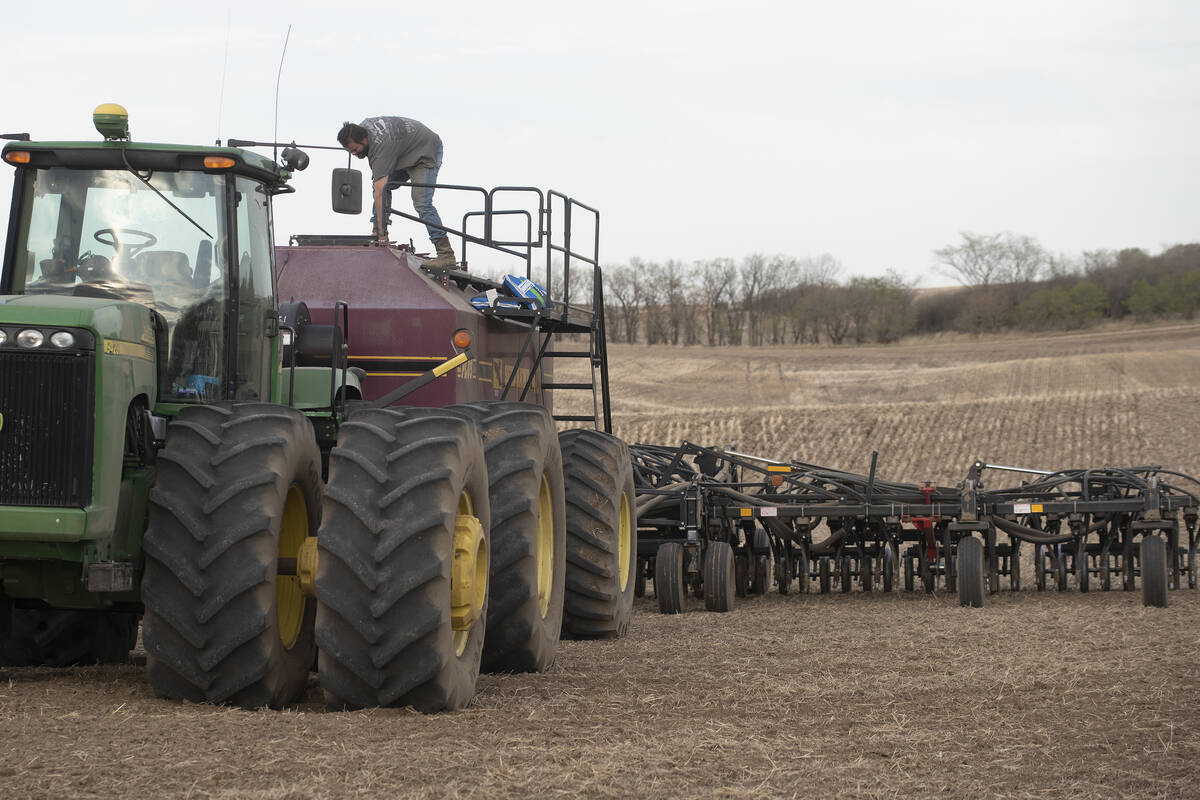Manitoba’s ag sector is trying to hold the line against big yield-killing threats like waterhemp and Palmer amaranth. Unfortunately, the number of municipalities where waterhemp has been found just grew by two.
“Waterhemp and Palmer amaranth are Tier 1 weeds regulated under the Noxious Weeds Act. They must be destroyed when they’re found,” said Manitoba Agriculture weed extension specialist Kim Brown-Livingston.
Why it matters: Aggressive and pernicious, waterhemp is herbicide-resistant and is a threat the province is trying to keep in check.
Read Also

Nutrien pays farmers for efficient nitrogen
Nutrien’s Sustainable Nitrogen Outcomes (SNO) program pays Prairie farmers to limit nitrogen loss and, therefore, fertilizer-related greenhouse gas emissions.
An early August edition of the Manitoba Agriculture Crop Report announced that waterhemp had been found in soybean fields in the RMs of Emerson-Franklin and De Salaberry.
“There are several fields affected in De Salaberry that are right along some drainage,” said Brown-Livingston, adding that producers should, “really be watching those areas where there’s been any kind of flooding and where any water could have been bringing those seeds onto the field with it.”
Both waterhemp and Palmer amaranth are pigweeds in the plant genus Amaranthus. To date, Brown-Livingston says Palmer amaranth has only been found twice but waterhemp is creeping up all over the province.
Waterhemp had already earned a reputation for being difficult to control in the U.S. before making its Manitoba debut in 2016. It had previously been found in Ontario in 2002, the first Canadian discovery.
By 2021, it had made its way into seven municipalities in Manitoba, all in the southeast, with the exception of the RM of Dauphin in the Parkland.
A factsheet put out by Ohio State University notes the ease with which the species dodged herbicide. As a cross-pollinated plant, it benefits from genetic variation that helps it develop resistance to chemistry more quickly, noted the document’s author, Mark Loux.
Its seeds are also abundant (well over a million per plant), meaning one newly resistant plant can quickly turn into a huge resistance issue across the field.
The Aug. 2 provincial crop pest update noted that all waterhemp found so far in the province has been glyphosate-resistant, while Group 2 and Group 14 resistance has also been noted.
Reports elsewhere in Canada have added Groups 5, 14 and 27 to the list of resistance concerns.
“Initially, it comes in probably resistant to glyphosate – maybe Group 2, maybe Group 14 – but it very quickly develops resistance to all of these other groups as well,” said Brown-Livingston.

“There’s a five-way resistant waterhemp in Ontario, but down in the southern States they’re at an eight- or nine-way resistance. That means eight or nine different herbicide groups no longer work on that weed. You basically have zero options left; there’s nothing left but hand weeding.”
The ability to quickly overcome herbicide is the main reason waterhemp warrants a slot in the top class of noxious weeds. The Noxious Weeds Act has requirements regarding control or eradication measures for different plants. It applies to anyone owning or occupying land in Manitoba on which the plant is located.
That means it falls to farmers to ensure this weed doesn’t get a foothold in the province.
Prolific seed producers
“They must not be allowed to set seed because they’re prolific seed producers,” Brown-Livingston said, adding that “across the border in North Dakota, there are fields with thousands of plants per square metre.”
Waterhemp has a particular affinity for row crops because it likes sunlight. And since there’s not a lot of crop competition early in the season in those crops, the weeds can establish.
“You need to monitor all of your corn and soybean fields – your dry beans, your sunflowers, anything that’s grown in a wide row,” said Brown-Livingston.
Last year waterhemp was confirmed in canola.
Glyphosate
The weed’s mastery over glyphosate adds to the challenge of controlling it in glyphosate-reliant crops like corn and soybeans, the weed specialist noted.
“We’re finding it in the fields where they’re just using nothing but glyphosate,” she said.
“With those crops, going forward, we encourage producers to be putting down something like an Edge ahead of time to get some of those weeds out, because your in-crop options are basically products that these weeds are already resistant to. There’s nothing you can do in the crop that will control this weed. So, you can get yourself into trouble pretty quick in some of these crops.”
If left unchecked, the weeds can cause almost complete yield loss in soybeans and corn.
“There are fields down in the States, where this started, that are not farmable for some crops because there are just no options left at all,” said Brown-Livingston. “People are starting to lose their farms over this weed.”
















